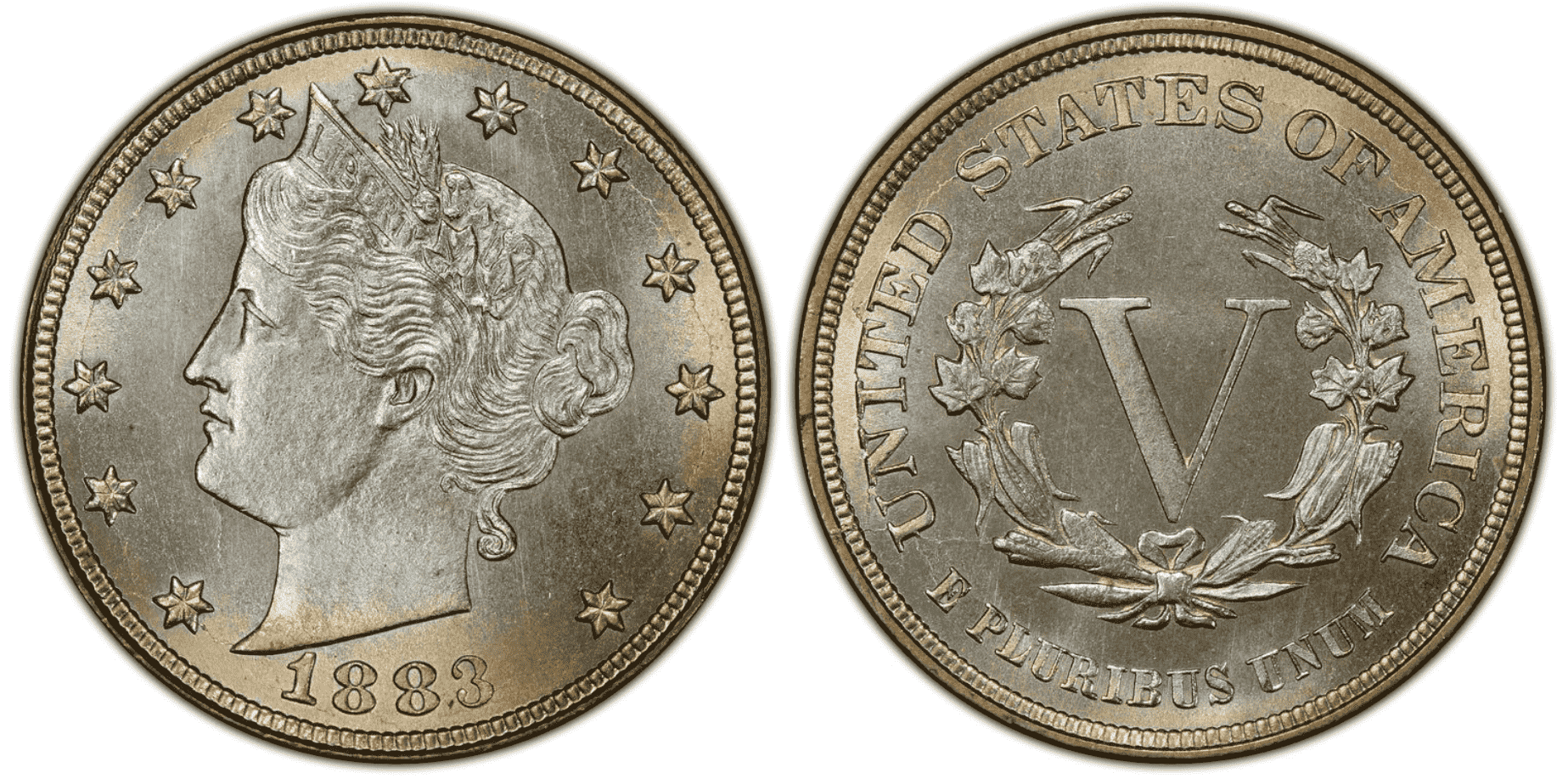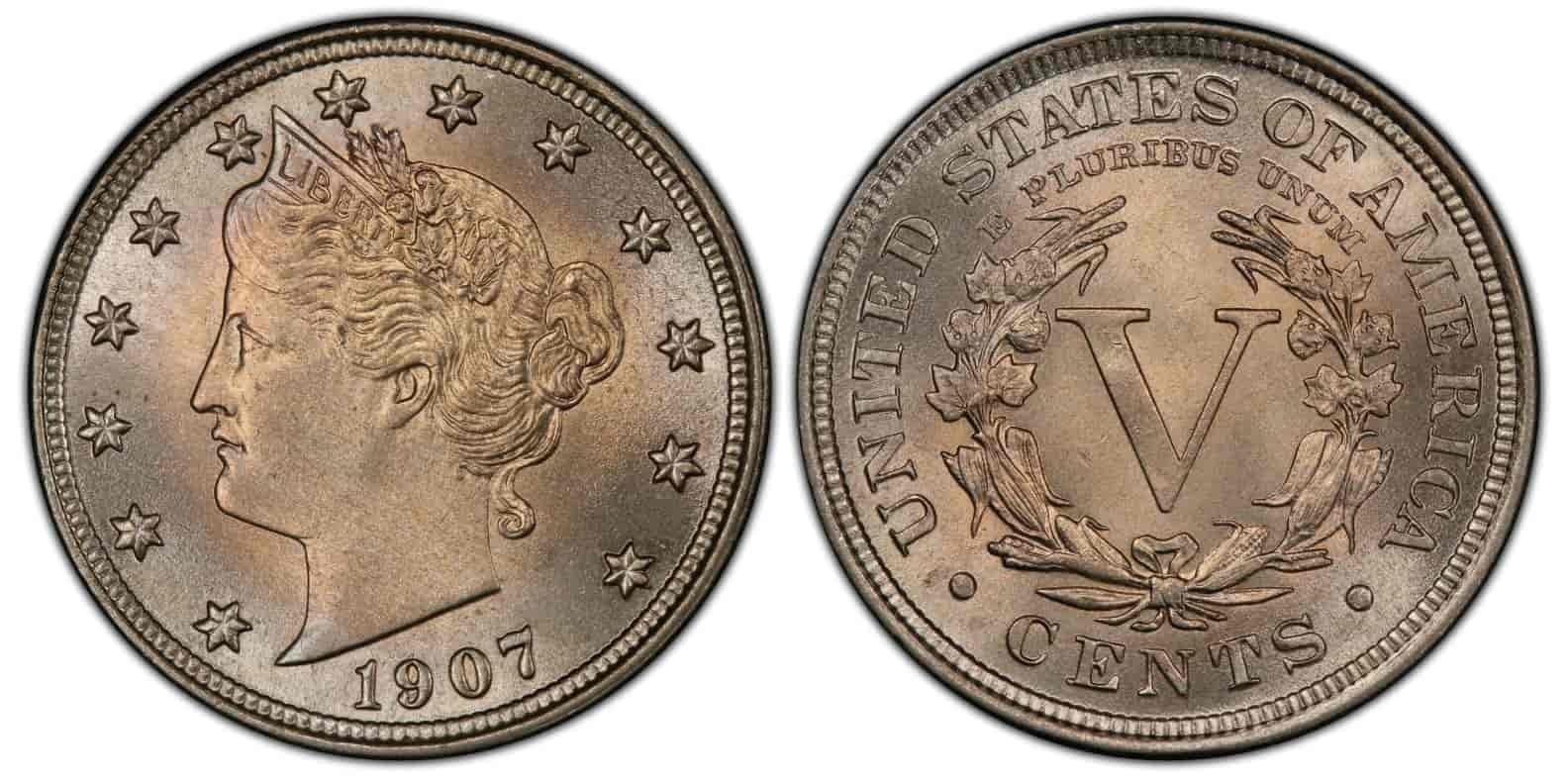Collecting Liberty Head Nickels
Posted by Andrew Adamo on May 2nd 2025
Collecting Liberty Head Nickels
In the late 1880s, the United States Mint began looking into replacing the Shield nickel, the first five-cent piece that was struck from 1866 to 1883 and composed of 75% copper and 25% nickel, because of longstanding production problems with that coin. In particular, its intricate design did not strike well. Continue reading to learn more about Liberty Head nickels.
Liberty Head nickel
Chief Engraver Charles Barber was asked to prepare designs for proposed one, three and five-cent pieces, but only the nickel design was approved. It featured a left-facing classic profile of Lady Liberty possibly based on the goddess Diana wearing a headdress emblazoned with “Liberty” on it surrounded by 13 stars with the date below, which is why these coins came to be known as Liberty or Liberty Head nickels.
The reverse shows the Roman numeral “V” for five surrounded by a wreath of wheat, cotton and corn with “United States of America” above and “E Pluribus Unum” below. Although two and three cent coins using Roman numerals for their denominations had already been issued for years, the lack of an inscription for the value led to one of the great numismatic stories of 19 th century American coins.
1883 cents and no cents types
Given both the lack of a stated denomination and the similarity in size between the new nickel and the $5 gold coin, fraudsters like Josh Tatum, who was deaf-mute, started gold plating the nickels and passing them off as $5 gold coins. These “racketeer nickels” were widely hoarded partly because of reports the Treasury department planned to recall them, which never happened.
They also led to a redesign of the reverse later in the coin’s first year of production, 1883. On June 26 of that year the Mint issued the revised coin which included the words “cents” at the bottom of the reverse, thus creating an important type coin for collectors.
Today the second variety is more scarce than the first as a result of extensive hoarding of the centless coins and because 5,474,300 of the no cents pieces were made. The with cents variety actually had a higher mintage at 16,026,200, but they were not saved to the same extent as the first variety and most examples today are very worn. PCGS estimates that only about 30,000 1883 with cents coins still exist compared to 100,000 no cents coins.
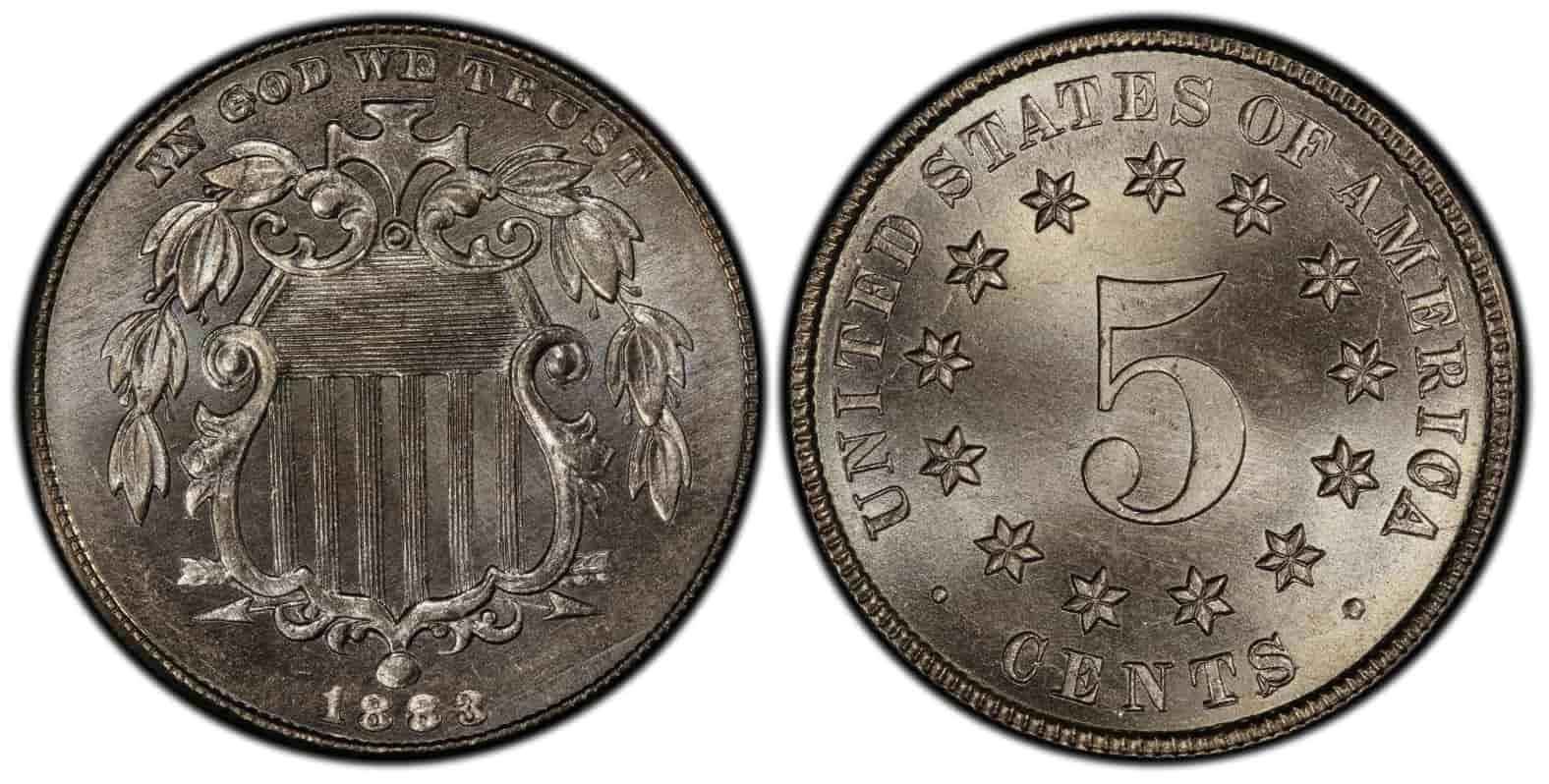
1883 Liberty Head Nickel with "Cents" - AUCTION RECORD: $13,200 • MS67+
Image source: PCGS
Liberty nickels were popular from the time they were first issued and remained in circulation through the 1940s. They struck almost entirely at the Philadelphia Mint except for the final year, 1912, when the first nickels were struck at the Denver and San Francisco Mints.
1913 Nickel
In 1909 the Mint began exploring a replacement for the Liberty nickel, and a design with President George Washington was prepared by Charles barber at the request of Mint director Frank Leach. But after Leach resigned, the Treasury announced the Mint would be soliciting new designs, and sculptor James Earle Fraser was approached, which eventually led to the Indian Head or Buffalo nickel design that had to be modified to make sure vending machines would accommodate the new coins.
The Indian Head design was approved on January 12, 1912, and on December 13 Mint Director Roberts told Mint staff not to take any action to prepare the 1913 nickels until the new design was ready. The same day (December 13) production of Liberty nickels ended.
However, either the Mint Superintendent ignored that order or another Mint employee did so and surreptitiously struck five 1913 Liberty nickels. It is believed but not certain that that person was Samuel Brown, who worked at the Mint as a clerk from 1912 to 1913 and later became a coin dealer. In 1919 Brown offered to buy such nickels for $500 each in advertisements in coin publications, and he displayed one of the coins at the 1920 ANA convention.
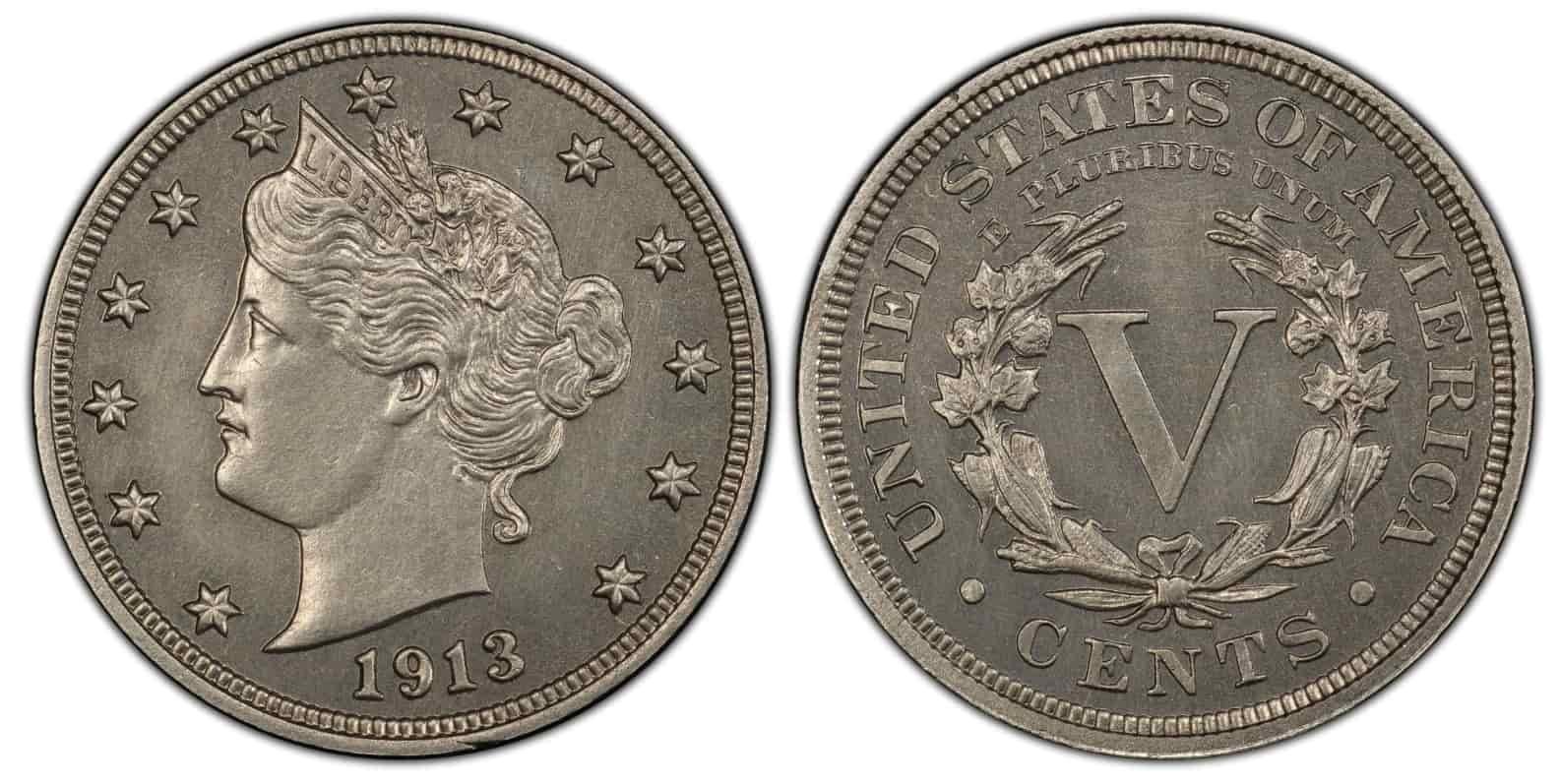
AUCTION RECORD: $4,560,000 • PR66 • 08-22-2018
Image source: PCGS
He eventually sold all five coins, which have traded hands many times over the years and have become one of the most famous and celebrated rarities in American numismatic history. The most famous is the example once owned by Egyptian King Farouk, which sold in 2020 for $3,737,500. The highest graded one sold in 2007 for $5 million, and the most recent sale was in 2018 for one that brought $4.5 million.
Liberty head nickel value
Most Liberty Head nickels, especially those from 1883-1884 and from 1899 to 1912, were minted in large numbers and are not expensive even in nice mint state condition when almost all dates can be had for a little over $100. This has a lot to do with the fact that at the turn of the century there was huge demand for nickels because of their increasing use in coin-operated machines and because a nickel at the time had considerable purchasing power compared to today.
These coins often have areas of light striking especially in the hair above the forehead and center of the stars on the obverse, and on the wreath bow and corn kernels on the reverse, so check those areas to find nicer examples.
As for type coins, the 1883 without cents is common all the way to MS66, where it runs $350 but jumps to $1800 in MS67. The 1883 with cents coins can be had for $115 in MS63, $325 for MS65 and reach $4,000 in MS67.
1912 Liberty Nickel
Apart from the 1913 nickel that is of course beyond the reach of virtually everyone, the Liberty Head nickel is a series that only includes one rarity, the 1912-S with by far the lowest mintage at 238,000. That coin is worth from $150 in Good 4 to $800 in XF-40, $2500 in MS65 and its highest known grade is MS66, which brings from $5,000 to $15,000 for an MS66+.
The 1885 and 1886 coins are also rare and are worth respectively $350 and $180 in Good 4, $2,650, $1400 and $625 in XF40, $1,200 in MS60 and $38,500 and $70,000 for the highest grade, MS67.
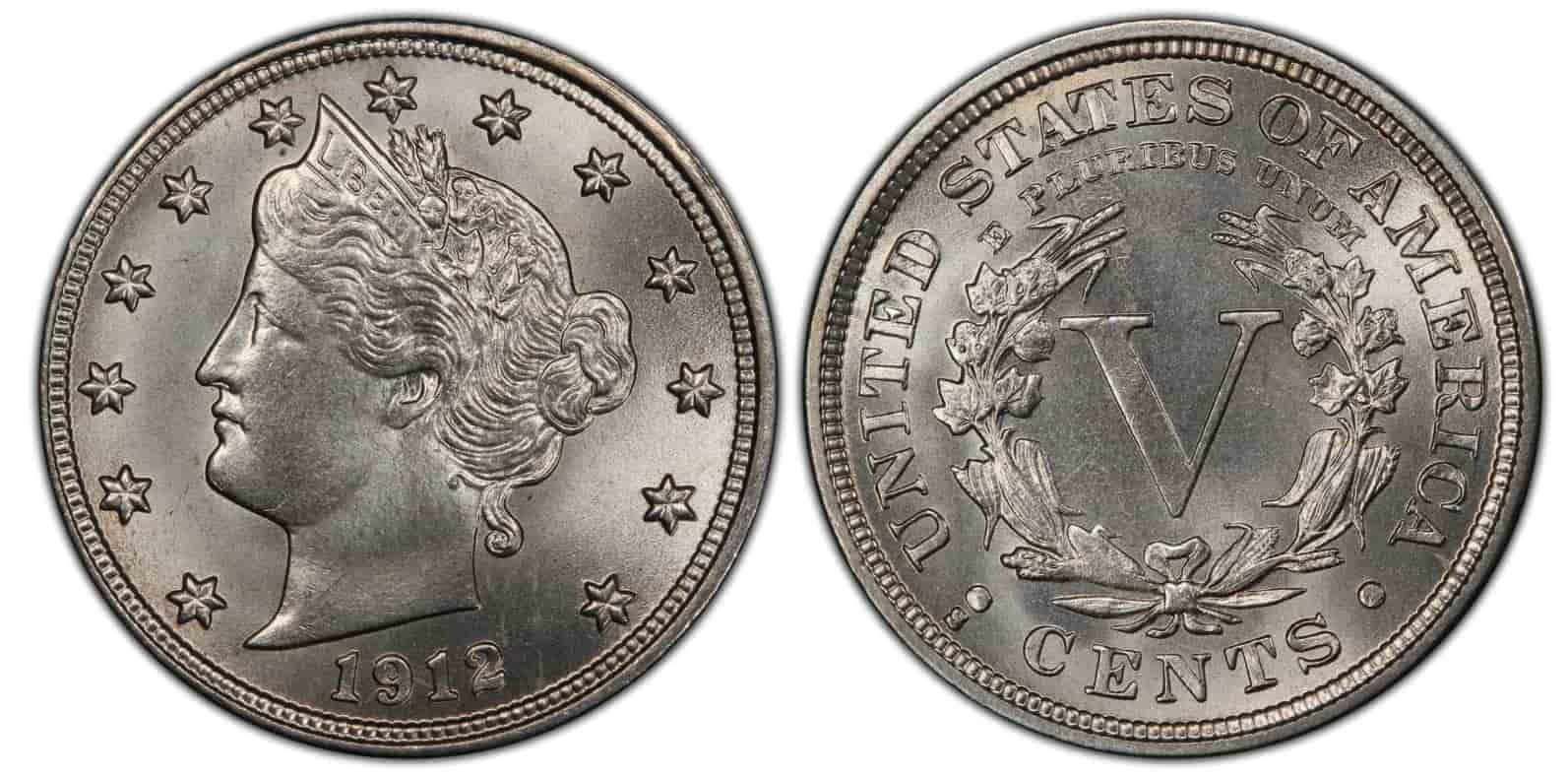
AUCTION RECORD: $37,375 • MS66 • 01-03-2012
Image source: PCGS
A complete set even in MS60 is not too hard to complete especially if one selects lower graded coins for these three rare issues, which could be upgraded later.
1911 Liberty Nickel
1911 is a common date Liberty nickel whose value tracks that of the type 2 (with cents) coin values listed above except at MS67, where it is scarce and worth $10,000 with only one coin graded at that level.
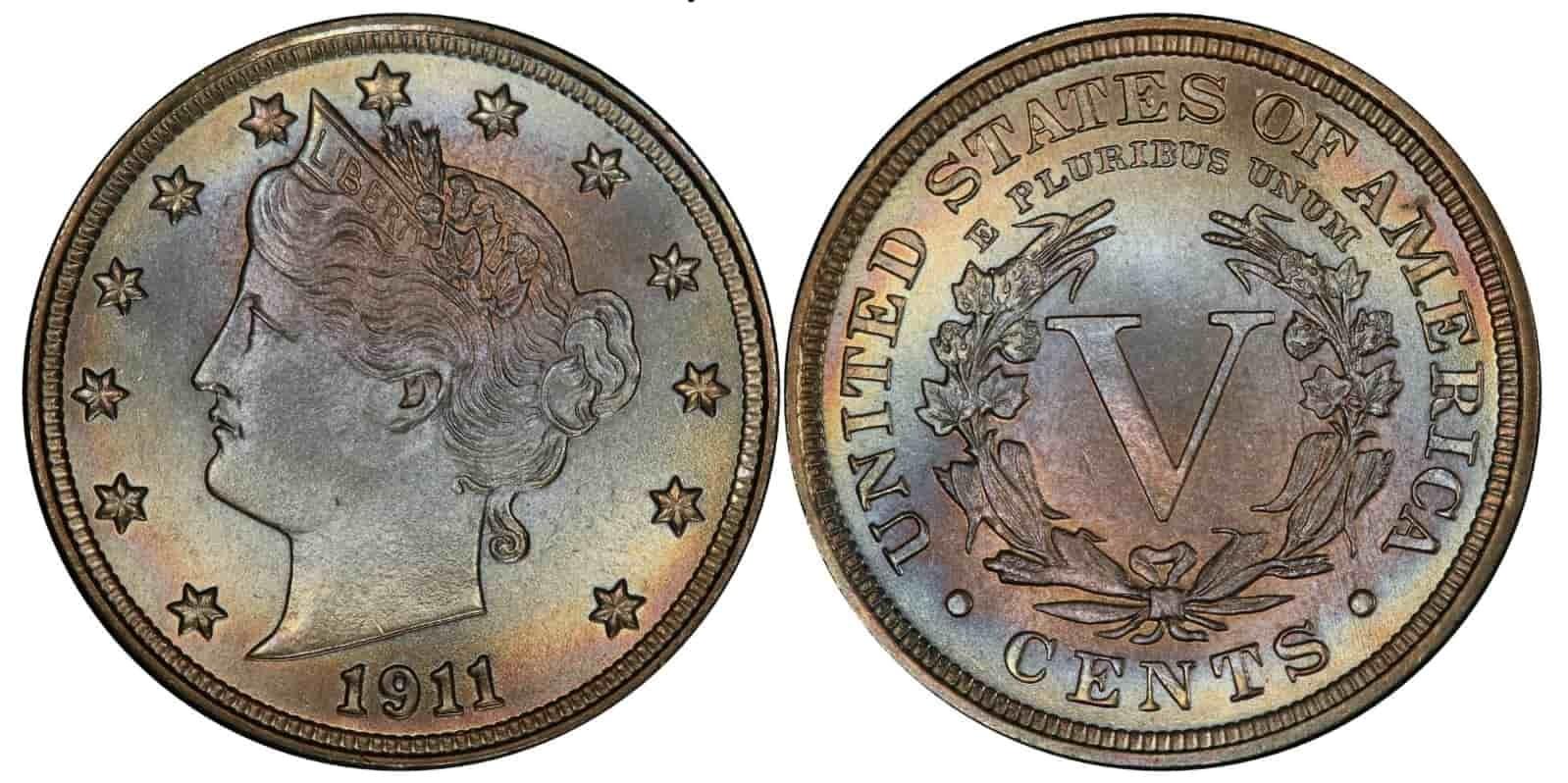
AUCTION RECORD: $14,688 • MS67 • 09-03-2015
Image source: PCGS
1907 Liberty Nickel
1907 also tracks the type coin values until MS65 and MS66, when it is worth about twice the value of a type coin at $550 and $1250 respectively and MS67 when it reaches $15,000. The record for that grade with only one example sold for almost $20,000 in 2019.
Liberty Head nickels will always be one of the most popular U.S. coin series that straddles the 19 th and 20th centuries because of its attractive design, rich history and ease of collectability with the exception of the infamous 1913 coin.
AUCTION RECORD: $19,975 • MS67 • 05-16-2019
Image source: PCGS
FAQ
1. What are Liberty Head Nickels?
Liberty Head Nickels, also known as "V" Nickels, were produced by the U.S. Mint from 1883 to 1912. They feature the profile of Lady Liberty on the obverse and a large "V" (for five cents) on the reverse. These coins are popular among collectors due to their historical significance and rarity, especially certain key dates.
2. What is the most valuable Liberty Head Nickel?
The most valuable Liberty Head Nickel is the 1913 Liberty Head Nickel. Only five known examples exist, and they are considered some of the rarest and most expensive coins in U.S. history. One of these nickels sold for over $5 million at auction.
3. How do you determine the value of a Liberty Head Nickel?
The value of a Liberty Head Nickel depends on several factors:
- Date and mintmark: Certain years, such as 1885 and 1912-S, are rarer and more valuable.
- Condition: Coins in higher grades (especially uncirculated) are worth more.
- Rarity: Limited mintage or surviving coins can command a higher price. Professional coin grading services, such as PCGS and NGC, help determine the value by assigning a grade based on the coin's condition.
4. What are the key dates for Liberty Head Nickels?
The key dates for Liberty Head Nickels include:
- 1885: One of the lowest mintage years, making it highly sought after.
- 1886: Another rare year with limited surviving coins.
- 1912-S: The last year of production for the Liberty Head Nickel, minted in San Francisco.
- 1913: The famous coin, although officially unauthorized, is the rarest.
5. Are there any errors or varieties in Liberty Head Nickels?
Yes, there are several notable errors and varieties:
- 1883 “Without Cents”: In early 1883, the nickel lacked the word “CENTS,” leading to confusion and counterfeiting. This design was later corrected to include "CENTS" on the reverse.
- Repunched Mint Marks: Some Liberty Head Nickels display repunched mint marks, particularly in later years. These varieties can increase a coin’s value among collectors.
6. How do you store and preserve Liberty Head Nickels?
To preserve Liberty Head Nickels, store them in a cool, dry environment and avoid direct contact with your hands, which can leave oils on the coin’s surface. It’s recommended to use archival-quality holders, such as coin flips, albums, or slabs, and avoid cleaning them, as this can diminish their value.
7. Where can I buy Liberty Head Nickels?
You can purchase Liberty Head Nickels from:
- Coin dealers: Reputable dealers specializing in U.S. coins often have Liberty Head Nickels in stock.
- Online marketplaces: Websites like eBay, Heritage Auctions, and Bullion Shark offer Liberty Head Nickels for sale.
- Coin shows and auctions: These are excellent places to find rare and valuable Liberty Head Nickels, including key dates and high-grade examples.
*This information is for educational purposes only. Bullion Shark is not responsible for any factual errors that may be contained in this post. This information is not intended for investment purposes. Please consult an investment advisor before investing.
Bullion Shark Coin Dealer is the leading Rare Coin Dealer for certified and graded Rare Coins. Authorized Coin Dealer (US Mint, PCGS, CAC, NGC & more), Top Most Influential Company In Numismatics by CoinWorld. Bullion Sharks offers exclusive labels through NGC, PCGS, and CAC, including the Magnum Opus Masterpiece label, the Thomas J. Uram and T.D. Rogers signature series, and the Paul Nugget Founders Signature Series. All of our Rare Coins are guaranteed authentic and are certified graded by PCGS, NGC or CAC. We have a 14 day money back guarantee return policy and work hard to provide complete customer satisfaction in every transaction. Bullion Shark Coin Dealer specializes in Morgan Dollars, Classic Rare Coins, Silver Eagles, Gold Eagles, Ancient coins, Silver Certificates, $2 Bills, and more. Our inventory updates daily, check back and sign up for our newletter. We will do our best to help you find what you are looking for.



